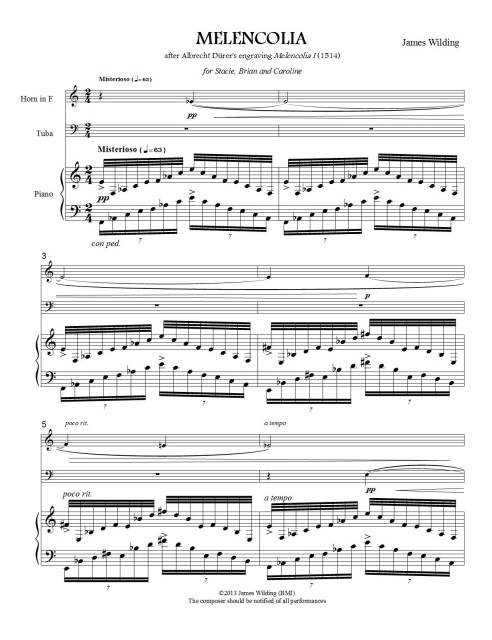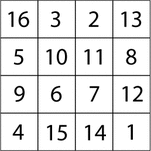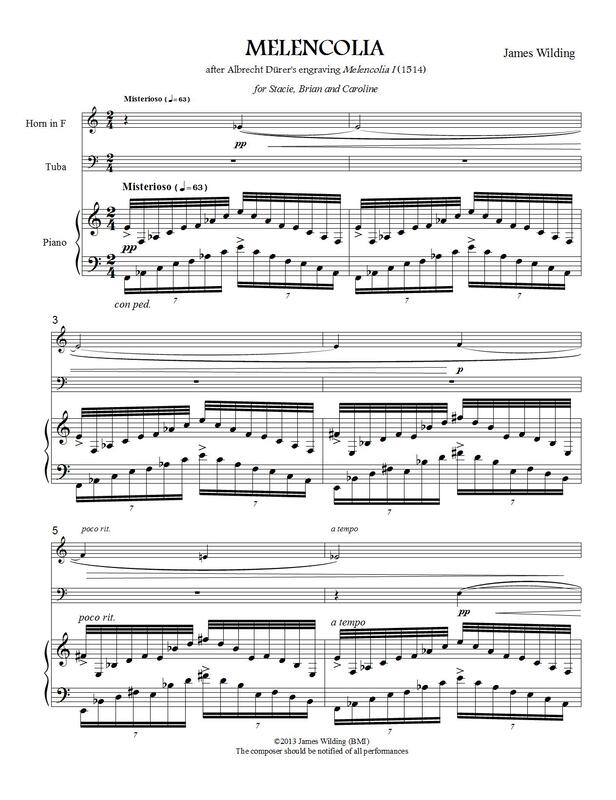- Compositions
- >
- Brass
- >
- Melencolia for horn, tuba, and piano
Melencolia for horn, tuba, and piano
SKU:
$29.99
$29.99
Unavailable
per item
SOFTCOVER $29.99
2013
18 minutes
13 pages (horn part)
13 pages (tuba part)
36 pages (special piano part)
48 pages (score)
FREE Shipping
The Magic Square and Polyhedron |
I saw a reproduction of Dürer's etching Melencolia I (1514) in the Scottish National Gallery, and was fascinated by the magic square, adding up to thirty-four in any direction. The more I thought about this allegorical work, the more aspects of it I felt would suit a musical composition. At that time my wife, the pianist Caroline Oltmanns, together with colleagues Stacie Mickens (horn) and Brian Kiser (tuba), were requesting a piece, and I felt that my piano style would combine well with the mid to low brass instruments to bring out the depth and mystery of the art-work. So I wrote the trio Melencolia (2013), scored for horn, tuba, piano, and cowbell (played by the tubist).
My composition opens with a long, brooding melody that depicts our modern-day understanding of the title as "depression." But for Dürer, the word had a much broader meaning, perhaps more like "creativity" and so the mood changes into something more restless at (1:45), and grows in triumph (2:23), before returning to the opening atmosphere (2:48). The ringing of a bell (3:16) draws our attention to the etching itself, as if an invisible hand had pulled the rope of Dürer's bell. A musical realization of the magic square begins (3:20) with groups of chords in the piano, where the number of chords in each group corresponds to the numbers in the square, read left to right, top to bottom. The chord groups are separated by short interjections, and longer duets take place at the end of each row of Dürer's numbers, satisfying the rule that each row should add up to thirty-four. The opening returns (6:42) and our thoughts return to the complexity of the concept of melancholy. A change of pace (8:14) depicts another detail in the etching: the winged child dreams of flying and using his useless wheel. Once this ecstatic dream has died away, the opening brooding melody returns (10:37). It leads again to the restless section (12:14), and then the most triumph of outbursts (13:28), Dürer's comet perhaps, in full glory. A mood of resignation takes over (13:48), and we are left to contemplate the play of light on the polyhedron (14:31), with the bell tolling from time to time, and the hourglass gradually running out. |





